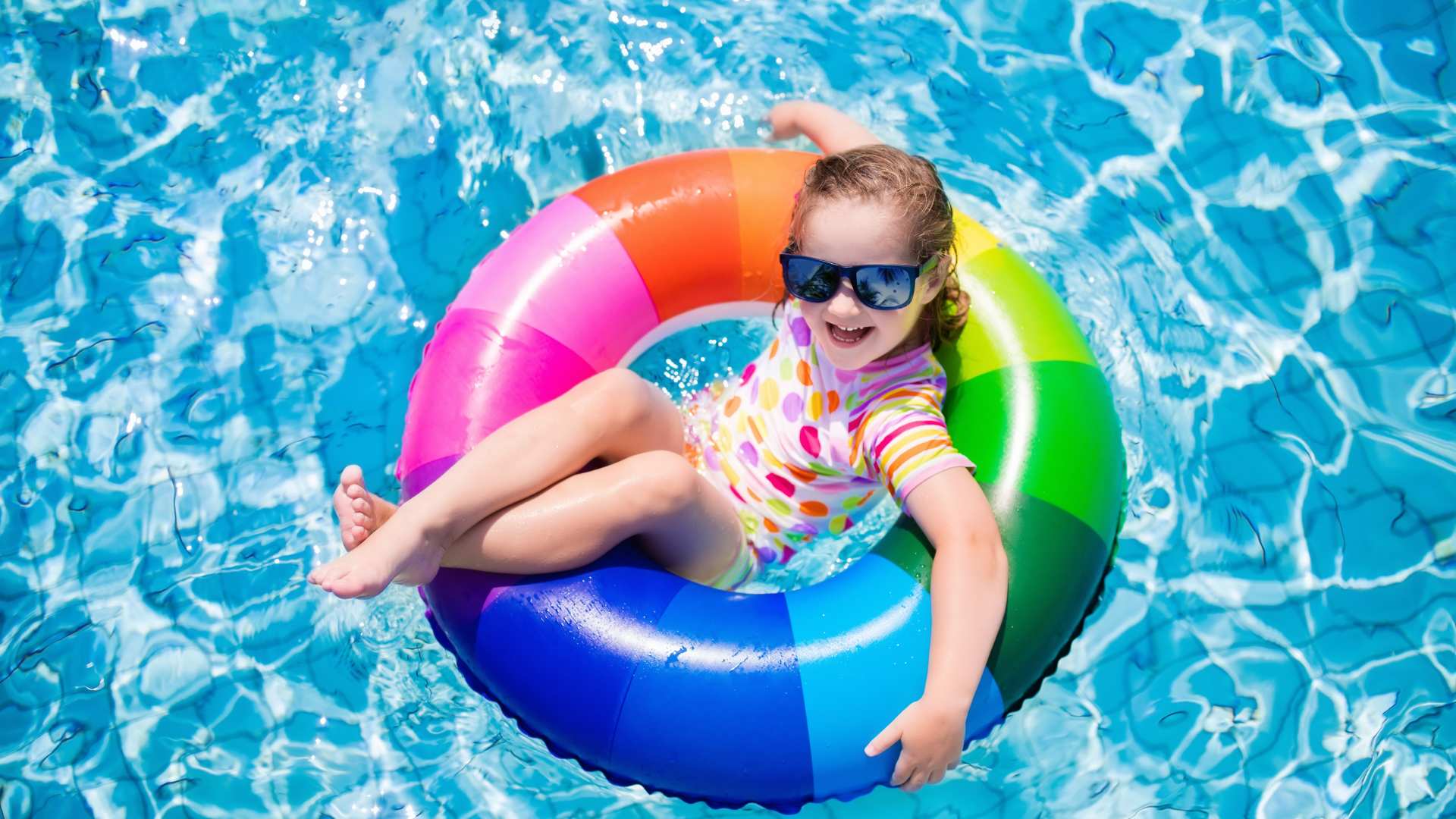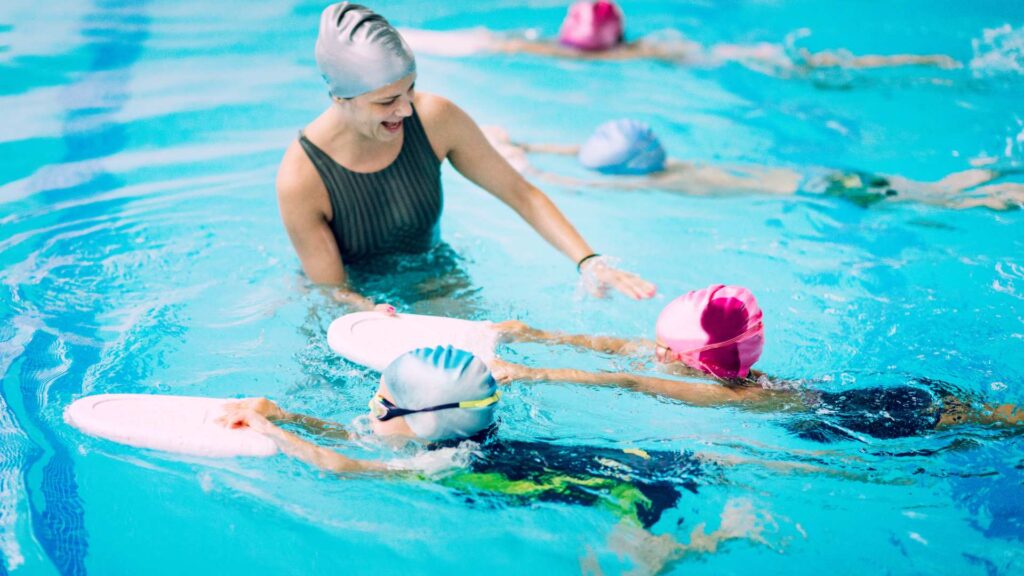Table of Contents
How can we keep children safe around water?
As summer approaches and families across Tennessee begin planning trips to lakes, beaches, and backyard pools, the excitement of warm-weather fun builds quickly. For most children, swimming is a favorite activity. But for children with autism spectrum disorder (ASD), these joyful moments can carry hidden risks that many families don’t realize. That’s why understanding swimming safety is critical—not just during summer vacations, but year-round.
The truth is, water can be thrilling and dangerous. According to the CDC, over 4,500 people in the U.S. lost their lives to drowning from 2020 to 2022. Many of those deaths involved children, and the risks are even higher for those on the autism spectrum. During National Water Safety Month, it’s essential to spread awareness about these dangers and help families take meaningful steps toward autism water safety.
This blog by ABA Centers of Tennessee explores why children with autism are at high risk near water and what strategies parents and caregivers can use to guarantee swimming safety.
Why Swimming Safety Deserves Our Full Attention
Water-related accidents are fast and silent. A child can drown in as little as 30 seconds, often without a single splash or call for help. The risk is significant for children with autism. Water is a usual attraction for children with autism due to its sensory appeal, such as the sound of waves, the shimmer of sunlight on the surface, or the calming pressure of being submerged. Yet they may not grasp the concept of danger or know how to call for help.

The National Autism Association has cited drowning as a leading cause of death for children with autism, indicating that children with autism are 160 times more likely to die from drowning compared to their neurotypical peers. This tragic reality underscores the urgency of making swimming safety a priority for all families.
What Makes Autism Water Safety More Complex?
While every child on the spectrum is unique, certain traits common to ASD can create specific challenges around water. These include:
Elopement: Many children with autism tend to wander from safe spaces without warning. This behavior, often referred to as elopement, becomes particularly dangerous near pools, lakes, or oceans.
Research from Injury in Epidemiology shows that nearly half (49%) of children with autism attempt to wander from safe environments—a rate four times higher than their siblings. Moreover, wandering was the precipitating factor in 73.9% of drowning incidents involving children with autism.
Limited Danger Awareness: Children with ASD might not recognize the risks associated with deep or moving water. They may enter without hesitation or supervision.
Delayed Response to Commands: Due to communication difficulties, some children struggle to respond to verbal cues like “stop” or “come back.”
Sensory Seeking or Avoidance: Some children are drawn to the feeling of water and may repeatedly try to access it. Others may panic due to sensory overload if water gets in their ears, eyes, or face, leading to disorientation and risk.
Communication Barriers: Nonverbal or minimally verbal children may be unable to express fear, confusion, or distress when in trouble in the water.
National Water Safety Month: A Crucial Initiative
May marks National Water Safety Month, an initiative that has grown significantly since it began as National Water Safety Week in 2003. Today, it represents a coalition of organizations including the American Red Cross, the National Drowning Prevention Alliance, the National Recreation and Park Association, and the Pool & Hot Tub Alliance.
National Water Safety Month serves as a vital reminder about drowning prevention education. For Tennessee families of children with autism, this campaign provides valuable resources, educational materials, and advocacy opportunities to enhance autism water safety.
Essential Swimming Safety Strategies for Children with Autism
Improving swimming safety for children with autism starts with understanding their unique needs and taking proactive steps. Here are several effective strategies that can make a big difference when protecting your loved one:
Specialized Swim Instruction
Enroll your child in swimming lessons explicitly designed for children with special needs. Look for instructors experienced with autism who can adapt teaching methods to accommodate sensory sensitivities and communication differences. Many organizations in Tennessee offer adaptive swim programs like:
Unwavering Supervision
Vigilant supervision is non-negotiable when it comes to swimming safety for children with autism. The “Phones Down, Eyes Up” campaign emphasizes the importance of undistracted supervision around water. Designate a specific “water watcher” whose sole responsibility is monitoring children in or near water.
Create Physical Barriers
Install four-sided fencing (at least 4 feet high) with self-closing, self-latching gates around home pools. Consider additional protection layers like pool alarms, safety covers, and door alarms. For families living near natural water bodies, secure boundary fencing and door/window locks are essential, as most wandering-related drownings occur in water sources close to home. Check here for safety barrier guidelines.
Visual Supports
Many children with autism process visual information more effectively than verbal instructions. Use pictures and minimal text to create clear visual rules about swimming safety. Social stories can help children understand water safety expectations, explaining concepts like “always swim with an adult” or “wait for permission before entering water.”
Safety Devices
For children at high risk of wandering, consider GPS tracking devices that can quickly locate a child who has eloped. Identification bracelets with contact information and autism notification can help others assist your child appropriately.
Emergency Preparedness
Learn CPR and basic water rescue techniques, and keep rescue equipment accessible. Create a clear emergency action plan and practice these procedures periodically to ensure everyone knows what to do in a crisis.
Communication with Caregivers
Ensure all adults who supervise your child understand the specific swimming safety risks associated with autism. Clearly communicate your child’s water safety plan, including swimming abilities, attraction to water, and supervision needs. For school settings, consider including water safety concerns in your child’s IEP or safety plan.
How ABA Therapy Supports Swimming Safety Skills
Our Applied Behavior Analysis (ABA) therapy programs can address specific water safety challenges through:
- Systematic teaching of safety rules into manageable steps
- Consistent reinforcement to strengthen safety behaviors
- Strategies to reduce wandering tendencies
- Functional communication skills development for water-related situations
- Collaborative family planning for comprehensive safety

Supporting Tennessee Families Every Step of the Way
At ABA Centers of Tennessee, we understand the unique challenges families face when navigating autism, including those tied to swimming safety. We tailor ABA programs based on each child’s needs and abilities, helping them build essential life skills, including how to stay safe in and around water.
Whether you live in Brentwood, Hendersonville, Nashville, or Madison, or prefer in-home autism care services, we’re here to support you. From safety planning to building communication and awareness, we work hand-in-hand with families to ensure that every child can enjoy their summer and their life with confidence and care.
If you’re ready to start an ABA program, contact us today at (844) 423-9483 or schedule a free consultation with our ABA specialists to discover evidence-based approaches to ensuring your loved one’s well-being.





